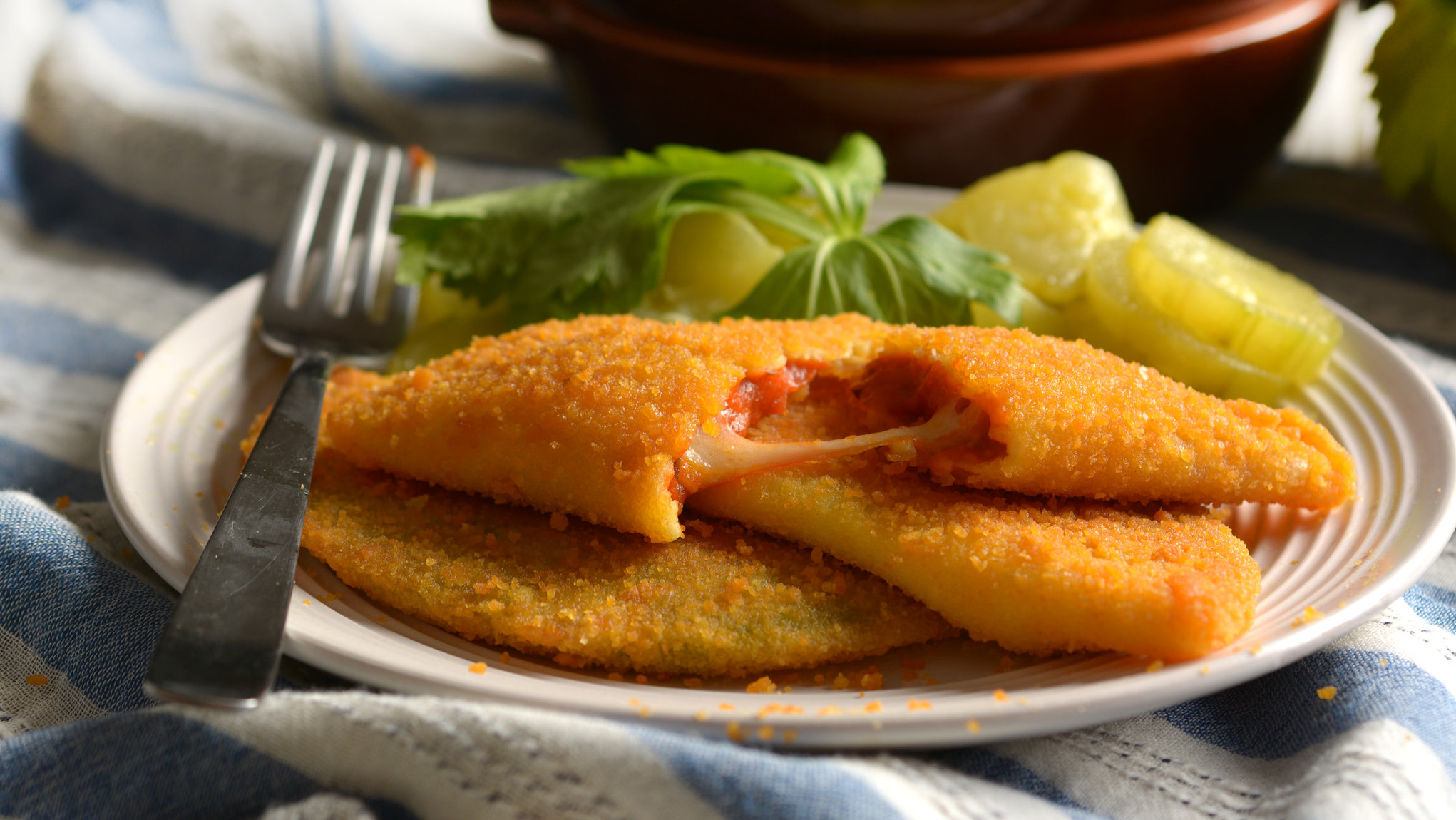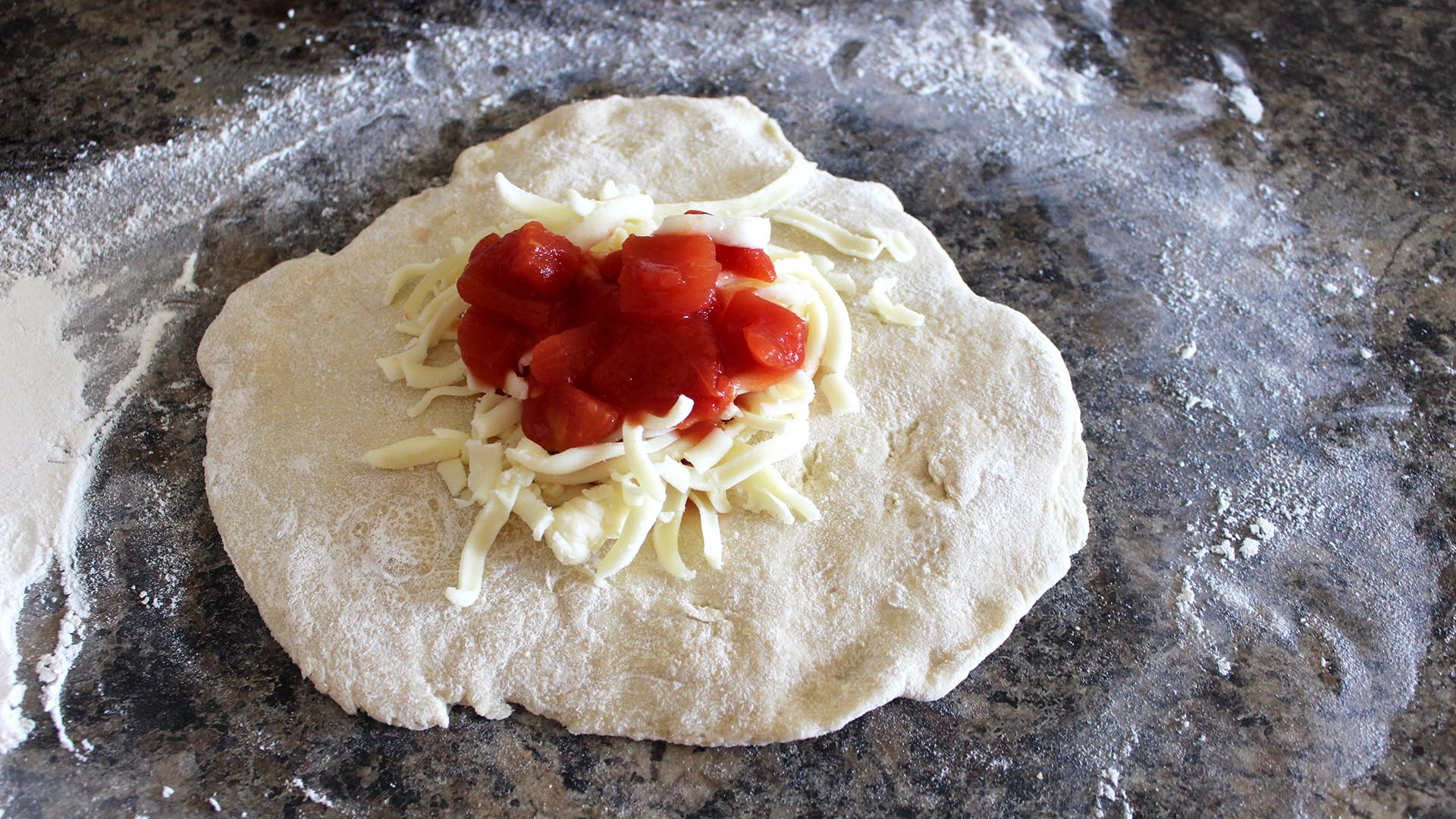Panzerotto Is The O.G. Hot Pocket
Everyone's heard of calzones, but I'm willing to bet you haven't met its deep-fried, gooey cousin: the panzerotto. This handheld snack is the forefather of what most Americans recognize as the Hot Pocket—sans cardboard cooking sleeve, scalding-hot interior, and requisite microwave.
Native to my father's southern Italian region of Puglia, a panzerotto is a personal pizza folded in half and cooked in hot oil until golden brown on the outside, melty on the inside.

Panzerotti were the highlight of my childhood winters. After Thanksgiving, my dad devoted Sundays to panzerotti test runs, training so that his recipe and technique were perfected in advance of the main event, Christmas Eve. My role in the operation as a young child was to sit and observe the panzerotti assembly. It wasn't until I was older that I was invited to participate in their preparation. This was a turning point in my life.
The first time I saw panzerotti on a restaurant menu was 2004, at Punky's Pizza and Pasta in the Bridgeport neighborhood of Chicago. I sat at a small bistro table with my friends and waited for my handheld entrée to arrive, so I could size up what a rival recipe had to offer. Twenty minutes later, out comes a pizza pan the size of an Ikea desk struggling to contain the biggest calzone I've ever seen. It could have fed four people, easily. The server simply said "Surprise!" and walked away as my face turned crimson with embarrassment.
Though there are no hard and fast rules about what can go inside a panzerotto, it is traditionally filled with tomatoes and mozzarella cheese. You can grab and eat them on-the-go from any storefront in towns across Puglia. Other than the traditional filling, I've filled my panzerotti with corned beef, black olives, capers, spinach, sausage, mortadella or other cured meats.
Wow, I just made deep frying a pizza sound kind of bougie.
Unlike the Hot Pockets we know, a bonafide panzerotto is rather labor-intensive, especially if you're making them in small quantities. From the creation of the dough to the station prep to making sure your oil temperature is just right, it is quite the operation. But say you want to tackle this as a weekend project. I can help.

The dough
The homemade dough is vital to the taste and texture (crunchy outside, fluffy inside) of the perfect panzerotto. It is the same dough used in my Nonna's Focaccia recipe, which can be found here. I can't stress the importance the right dough makes in this recipe. It's fluffier than most homemade pizza doughs, which adds lightness—if that's possible in a deep-fried pizza pocket—to the final product.
The oil
Many panzerotti recipes call for the frying vat to be filled with olive oil, and others call for vegetable oil. But I am here to tell you that canola oil is the best oil for frying panzerotti. Make sure you have a lot on hand—at least a gallon—as you will need to make sure you have enough of it to fill the pot you are using to fry. I use an 8-quart stock pot, but other people I know use a deep-frying pan. The average length of a panzerotti is about six inches, so make sure the pan or pot is deep enough for the panzerotto to float and not touch the bottom of the pan while frying.
The assembly line
Any good Italian knows an assembly line is the key to success, whether it's opening gifts at a bridal shower, lining up for the sweets table at a baptism, or creating a batch of panzerotti. In the first position is the dough and flour: Sprinkle all-purpose flour on the work area, grab a fist full of dough—about baseball-sized—and roll it out until it is the size of a personal pizza, about 7 inches. Next, add your fillings, ensuring that you do not overfill and have enough room for the dough to seal all the way around when you fold it over. I recommend a generous pinch of cheese and a tablespoon of tomato sauce. Reach back to position one and get your fingers coated in flour, and then fold the dough over the filling to create that "pocket" and then pinch the sides of dough together to seal in the filling. Make sure this is done well and the pocket is sealed tight—because if it leaks in the oil there will be problems. Fill all your panzerotti before you begin frying.
Fry, baby, fry
Once the cooking oil has reached a golden color, use a candy thermometer to make sure the oil has reached 375 degrees Fahrenheit. (If it gets any hotter, your dough will burn and it won't make for a cute panzerotto.) Toss in a small, flat piece of dough to test that is ready to fry. Once your panzerotto is in the oil, let it float and first fry on whatever side it naturally ends up on; then flip it over onto its other side. Once it's golden brown on both sides—timing depends on your oil, but this usually take 1-2 minutes—your panzerotto is ready. Remove it using two wooden spoons and place it on a rack to cool.
Mangia
You could serve panzerotti whole or cut in half; I usually eat mine whole without utensils. It is a hot pocket, lower case, after all. These are best served fresh and hot from the fryer, but could also be frozen and oven-baked in the future.

